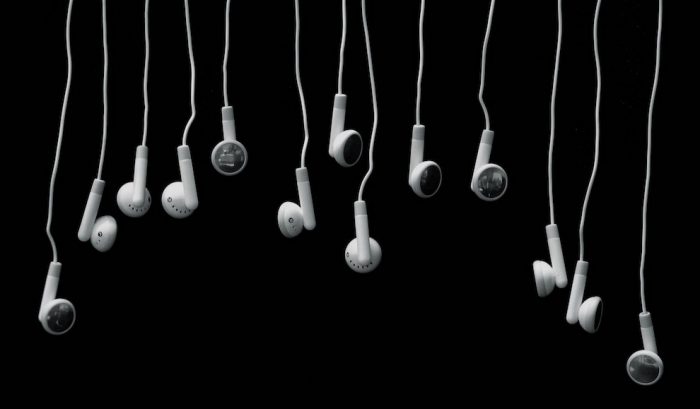
Daily news podcasts make up less than 1% of all podcasts produced but account for more than 10% of the overall downloads in the United States, according to a new report from the Reuters Institute for the Study of Journalism.
The report — authored by Nic Newman and Nathan Gallo — looked at 102 daily news podcasts in six countries (U.S., the U.K., Australia, France, Sweden, and Denmark) and finds the format is thriving. Thirty seven daily news podcasts have been launched within the last year, including a number of “pop-up” coronavirus podcasts that, despite a warp-speed production process, found success.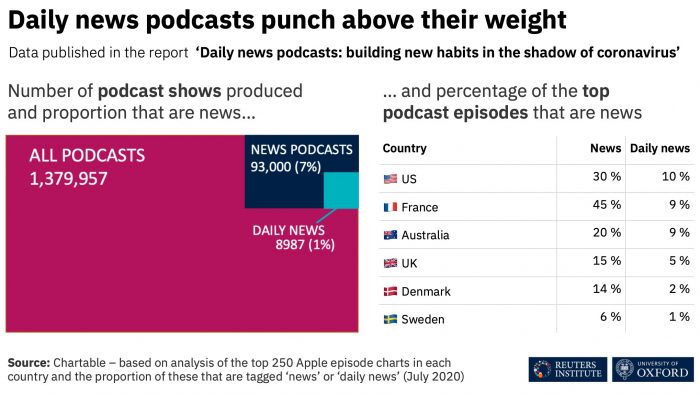
The Daily — The New York Times’ ultra-popular podcast — gets a lot of credit in this report. Hosted by Michael Barbaro, The Daily is widely cited as inspiration and the report authors credit its popularity with driving the explosive growth of daily news shows in the United States.
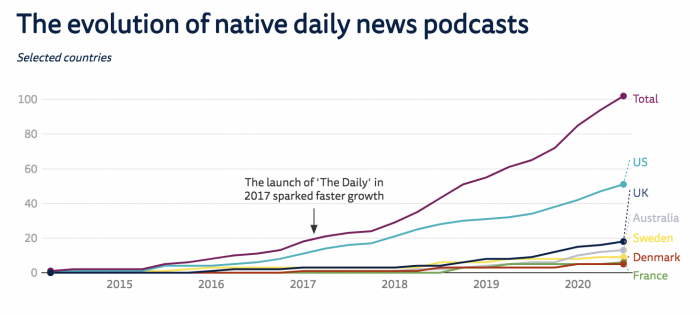
Some daily news podcasts are reaching more people than traditional print or TV. The New York Times says The Daily now averages four million downloads per day, up from two million just a year ago.
On an earnings call earlier this month, CEO Meredith Kopit Levien said the Times has found The Daily “drives affinity” for the news organization at large and that the vast majority of its listeners are younger than the average print subscriber. Levien said most listeners of The Daily tune in four to five times per week and noted that The Daily’s feed has proven to be an effective distribution mechanism for other audio products from The Times — like The Sunday Read, The Latest, and the multi-episode series The Rabbit Hole.
The Reuters report found that the younger-skewing audience held true across countries:
Podcast listening overall also skews young, with under-35s in the UK four times more likely to consume a podcast when compared with over-55s. Previous research shows that younger groups spend a considerable amount of time listening to podcasts and generally listen to the majority of each episode. They say they appreciate the diversity of voices and enjoy getting away from screens.
Many broadcasters we spoke to for this report see podcasting as a crucial way of attracting the next generation of listeners … While podcasts are certainly attracting younger groups, data from the Digital News Report 2020 also show that news podcasts currently tend to perform better with highly educated and more urban groups. This is a highly prized group for advertisers and for publishers looking for potential new digital subscribers.
The default Apple podcast app still reigns supreme but Spotify and other platforms — Google Podcasts, Pocket Casts, iHeart Radio, Castbox, Acast, Stitcher (and more!) — have gained ground.
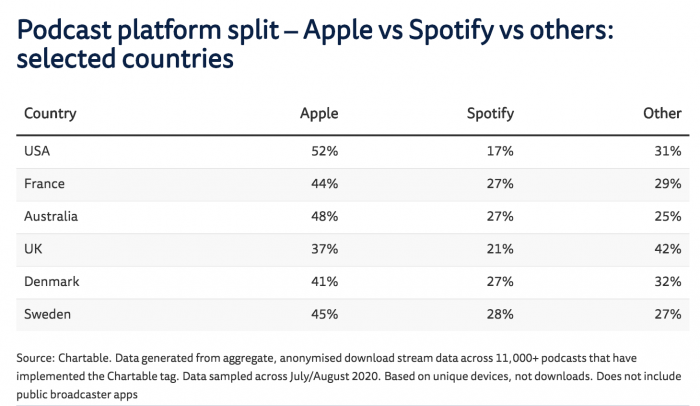
The authors reported that “public broadcasters in particular are concerned that, as podcast listening grows, they may lose the direct connection with audiences they have enjoyed on radio.” In response, the BBC is experimenting with releasing content first in its own BBC Sounds app while ABC in Australia has prohibited some of its podcast content from appearing on Spotify.
Many of the producers interviewed said their shows were directly inspired by The Daily’s “deep dive” format in which one episode examines a single story in detail. (Other highly-produced “deep dive” examples cited include Post Reports from The Washington Post, Please Explain from The Sydney Morning Herald, Today in Focus from The Guardian, La Story from Les Echos, and the Danish Broadcasting Corporation’s Genstart.)
All in all, nearly half of daily news podcasts fall into this category:
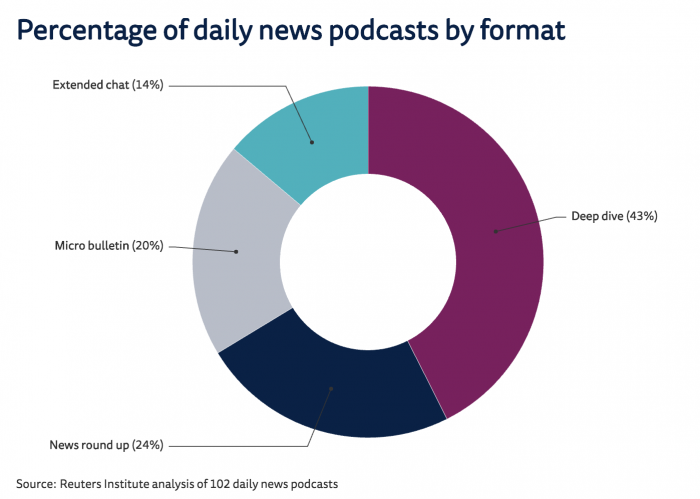
“Print and digital-born media in particular have focused most on [the deep-dive] format because it is seen as a good way of showcasing the depth and range of newsroom expertise,” the report notes. Other formats were the “extended chat” (BBC’s Newscast, The Daily Wire’s the Ben Shapiro Show, or NPR’s Politics), “news roundup” (FT News Briefing or Sweden’s OmniPod), and “microbulletin” shows (NPR News Now, BBC Minute, or Swedish Radio’s Ekot).
As you might expect, the microbulletin podcasts tend to be shortest and the extended chats the longest. For the others, there’s a cluster around the sweet-seeming spot of 25 minutes.

The authors found that, after an initial dip as routines and commutes changed in late February and early March, podcast listening “bounced back.” Daily news podcasts fared “better than most other genres” and some — like Today in Focus from The Guardian and NPR Up First — saw their highest numbers yet. (Overall, the data the authors analyzed found that news and comedy podcasts got a boost while shows focused on sports have yet to return to their pre-Covid numbers.)
Many daily news podcasts were designed to be heard in the morning. (Think: “Here’s what else you need to know today.”) But Covid-19 has changed when listeners are pressing play. The report found the typical morning spike has flattened as more listeners listen throughout their day.
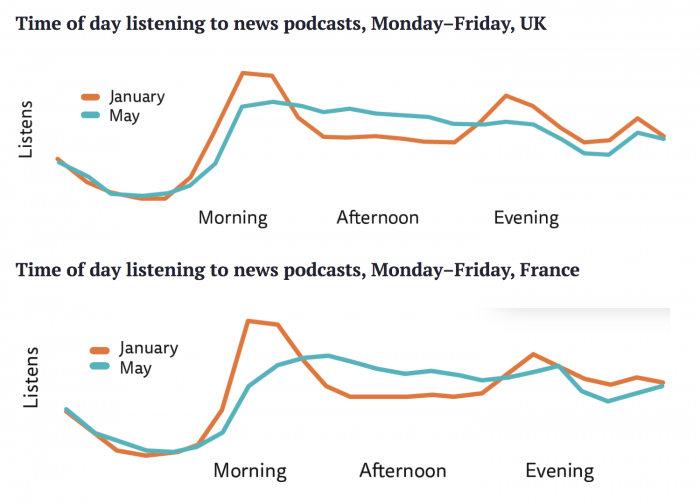
In interviews, publishers also reported that advertising for daily news podcasts held up better than other areas and that, overall, their revenue matched or exceeded what they were seeing before Covid-19.
You can read the full report here.